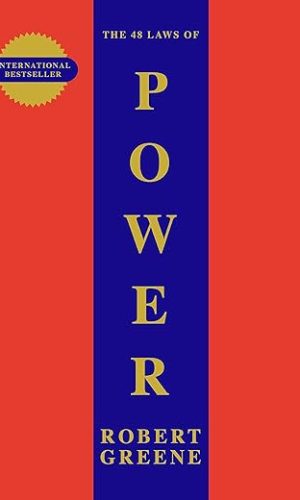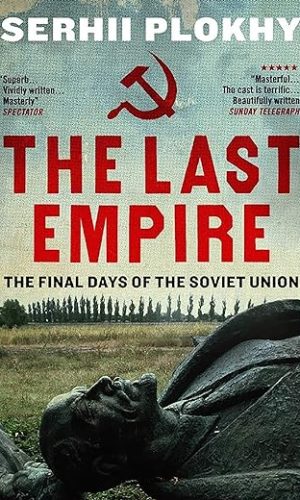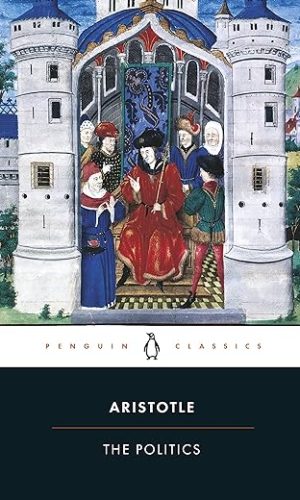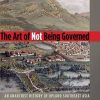The Art of Not Being Governed: An Anarchist History of Upland Southest Asia: An Anarchist History of Upland Southeast Asia (Yale Agrarian Studies Series)
£19.00
For two thousand years the disparate groups that now reside in Zomia (a mountainous region the size of Europe that consists of portions of seven Asian countries) have fled the projects of the organized state societies that surround them – slavery, conscription, taxes, corvée labour, epidemics and warfare. This book, essentially an anarchist history, is the first-ever examination of the huge literature on state-making whose author evaluates why people would deliberately and reactively remain stateless. Among the strategies employed by the people of Zomia to remain stateless are physical dispersion in rugged terrain; agricultural practices that enhance mobility; pliable ethnic identities; devotion to prophetic, millenarian leaders; and maintenance of a largely oral culture that allows them to reinvent their histories and genealogies as they move between and around states. In accessible language, James Scott – recognized worldwide as an eminent authority in Southeast Asian, peasant, and agrarian studies – tells the story of the peoples of Zomia and their unlikely odyssey in search of self-determination. He redefines our views on Asian politics, history, demographics, and even our fundamental ideas about what constitutes civilization, and challenges us with a radically different approach to history that presents events from the perspective of stateless peoples and redefines state-making as a form of internal colonialism. This new perspective requires a radical reevaluation of the civilizational narratives of the lowland states. Scotts work on Zomia represents a new way to think of area studies that will be applicable to other runaway, fugitive communities, be they Gypsies, Cossacks, tribes fleeing slave raiders, Marsh Arabs, or San-Bushmen. Chosen as A Best Book of 2009, Jesse Walker, managing editor, Reason.
Read more










by MNS
This book presents a view of the nature of and relationship between “hill” and “valley” peoples to be very different from the “barbarian” vs. “civilized” take that those outside the field may have been exposed to. The book provides a convincing and evidence-based argument that there was continual cross-over between the two groups and that ethnicity was more of a social than a genetic matter.
The book shows that in general hill people were originally valley people who chose (or were driven to) the hills rather than be incorporated into valley states. It also shows the volatility of states.
The book also shows how the physical geography could expand distances (e.g., horizontal distances that include hills and mountains are much “further” than those same distances over plains), and how this meant that in some cases hill people could live quite near valley and plain people. Similarly, the book shows how the type of food grown affected people’s mobility and thus how states preferred people to grow crops that tied people to particular localities and growing seasons so that they could be controlled and taxed.
Overall this is a very interesting and well written book.
by Vigilantius
James Scott writes with passion and with an intriguing focus on various highland peoples of Indo-China – whom he clearly admires – which he uses as an exemplar of his thesis that ‘the history of hill peoples is best understood as a history not of archaic remnants but of ‘runaways’ from state-making processes in the lowlands … providing that we take the long historical view’ (page 24).
Scott goes a stage further and quotes approvingly Owen Lattimore’s claim that ‘pastoral nomadism arose after farming and drew in sedentary cultivators who “had detached themselves from farming communities” … [such that] states and nomadic peoples are twins, born more or less at the same time’. This is interesting, but no evidence is given for either of these two radical assertions. Nor is it clear that the hill peoples were not always there, or what way of life the farmers-turned-pastoralists had beforehand (in Scott’s scenario).
However, Scott is certainly right that history is written backwards by the victors – ie nation-states and urban dwellers – which does a severe disservice to the creative chaos and conflicting current of different social-political models in the early days of mankind. Equally, this approach privileges lowlanders as sophisticated and worthwhile, while denigrating hill peoples as primitive, with little of cultural value.
While there is a wealth of fascinating observation on the evolution of the societies of mountainous parts of Indo-China (which Scott calls Zomia), and how they existed outside state control, the core argument is not backed up by evidential data or accurate historical knowledge. For example, Scott claims that ‘most subjects of ancient states were … slaves’. However, even in the early Roman Empire, only a minority of the population were slaves; and by the later Empire the proportion was down to 10-15% (according to Kyle Harper). If Scott had said that all empires are founded on large-scale coercion of populations – who, however, later (mostly) identify with the Imperial project – then he would have been plausible, but Scott wants a more extreme story.
The second pillar of Scott’s approach is that ‘it was very common for subjects to run away’ which is vague and for which statement no cogent proof is given. Nor is there any evidence given by Scott for his central assertion that the majority of hill peoples (anywhere) are made up of ‘runaways’ from state control. He adduces no proof of this for Zomia, and this approach is plain wrong when one thinks of the Tibetans, the Basques, the Swiss, the Highland Scots and indeed any other hill people, except on a short term and low level basis. Yet Scott claims that regions such as Amazonia, the Balkans and the Caucasus have always been primarily populated by people seeking refuge from brutal states. However, the Amerindian tribes of Amazonia largely had no contact with the native Andean empires or those of the white colonialists until the 20th century, and I doubt that significant numbers of non-Amerindians ever fled to Amazonia to live with the native Indians. Likewise, from my historical researches, I think that people did not generally flee to the Balkans in Roman, Byzantine or Ottoman times (the Roma presence in the mountains is echoed across the plains) nor in the 20th century. Indeed, the Balkan ‘hill’ peoples there have fostered much nationalist warfare, which has, at times, overwhelmed the lowland urbanites. Thirdly, while the Muslims of the Caucasus are still in a state of siege by Russian imperialists, the Georgians have been living in the Caucasus as a fractious but still largely homogeneous group for thousands of years, with their own dynasties, and despite endless attempts to subdue them. They are not runaways.
Even regarding his chosen region, ‘Zomia’, Scott simply asserts that ‘it is clear that the hills were populated increasingly by pulses of migration by state subjects fleeing valley kingdoms.’ This may be true, but no details, evidence or chronology is given. Doubtless, it is very difficult to do this, but then what is the basis for the claim?
Likewise, the sub-heading for the book is that it is an ‘anarchist history’, but this is merely a ploy for attention: Scott gives no sense that the peoples of ‘Upland Southeast Asia’ are lawless or live in a state of unbounded individual freedom (two prime requisites for anarchy), only that they exist happily enough outside the control of an over-arching state. They have fairly rigid ‘laws’, but these are unwritten and communal, bound by strong memories and taboos.
The little ‘history’ which is given in this polemical work is severely impersonal, with few individual names or identifiable stories or incidents. The reader’s imaginative empathy is as little engaged as his or her forensic judgement.
Nevertheless, this magisterial academic work is a pleasing reversal of the usual story of the barbarians coming from the hills to terrorise urban lowlanders. Instead, the lowlanders created states and empires which alienated ‘large sections of their population’. This is well-attested, but is it right that big chunks of lowland populations fled to the hills, anywhere, anytime, on a permanent basis? Yes, the hill peoples resisted, but these peoples of the periphery were always there, not as refugees but as native-dwellers for thousands of years. And were the hills really places of ‘cultural refusal’ in the active sense, or just zones which the centre could not reach, so the numerous small groups in the uplands were able to go their own way? It is the attribution of an active agency of resistance to ‘hill peoples’ which I am here questioning – not their difference, nor indeed the many valuable and attractively non-collectivised aspects of their ways of life.
Scott gets into a typical muddle when he says that ‘hill societies … tend to be animists, or in the twentieth century, Christians, who do not follow the great tradition salvation religions of lowland people’ – what else is Christianity, but a lowland salvationist religion?
The author again stretches credibility past breaking point when he describes highland peoples as essentially egalitarian, giving zero evidence. I doubt that hill peoples were more progressive than lowlanders regarding the place of women or the disabled, and one could surely not claim that hill peoples have in any way been the model for equality in recent centuries (excepting the Swiss).
The problem, I think, is that Scott has romanticised the hill peoples of Indo-China to such an extent that, while his argument may be correct for certain, exceptional groups in that region, he has felt impelled to make grand claims for all of anthropology and has lost touch with nuanced credibility.
He may be the Sterling Professor of Political Science at Yale University, but – in terms of the big picture thesis which he advances – this is a sloppy work, lacking carefully argued evidence or historical accuracy.
by ignorethepain
What a great book. Long and at times repetitive but very interesting for those interested in minority groups and hill tribes in particular.
by fio
Bought for my father who wanted to give it 4.5 stars. He said ‘a brilliant concept with thought-provoking ideas, a little long-winded at times’
by T E Kingston
Excellent read that takes a completely new look at societies around South East Asia. As someone who travels/works in the region and studies it, it’s always refreshing to see a new take on subjects.
This book offers some well researched opinions and some interesting facts (you’ll find out how far an ox can go before it eats the same amount of grain as it’s carrying) and will give you a completely new perspective on race and ethnicity.
Well worth getting!
by Vikramaditya Thakur
Great prices, fast delivery!
by Alexander the Corrector
James Scott turns geopolitics on its head by viewing it from the perspective of the loosely defined ‘hill tribes’ of highland South-East Asia, and by extension that of all state refuseniks. The result is filled with original insights into a head-spinning range of fields that includes state formation, language and ethnicity, the relationship between geography and history, and the uses of slash-and-burn agriculture, non-literacy and millennial prophets. The points are made vigorously and sweepingly, and then buttressed with often repetitive detail, so it may be a dry read for some and superficial for others; but the ambition of its thesis demands both vision and diligence and I found it well pitched.